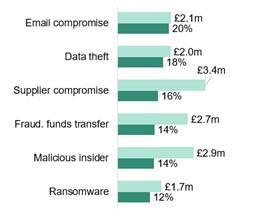Coping with a changing business environment may require a new human capital risk agenda suggest Mark Edelsten and Rema Sood
In today's difficult economic climate, companies are struggling to find areas for corporate growth. The annual budgeting process for 2003 has resulted in many companies asking if the end of the downturn is in sight, or whether they must face deeper structural changes. As a result, many organisations are likely to delay taking on additional members of staff or buying new capital equipment (especially within the telecoms and airline industries) until there is greater predictability of growth. Adrian Slywotzky of Mercer Management Consulting believes that 'much of the growth of the 1990s was brought about through mergers, international expansion and price increases'. In light of this, many would argue that growth, even when it does return, will not be as rapid as in the 1990s, and may have to come from different means, as markets are saturated and investment is flat.
Falling prices may be the toughest challenge for companies, with the focus having to turn to product quality and customer service to stay ahead of the competition. For most, this is an entirely new experience.
In addition to falling prices, companies are having to cope with wider challenges, such as:
Recent research by Goldman Sachs explored whether the world economy is to blame for the poor economic performance of European countries, especially Germany. Politicians have often pointed to shocks in oil and food prices, and the lack of global investment as the main reasons for the world economy's problems. Some have blamed the European Bank for holding monetary policy too tight. which has had an adverse effect on price setting and competitiveness.
As a result of this changing economic climate, it is fair to say that company bosses are having to adapt to a different world. To win market share in this turbulent environment, companies will need to change the way they operate, their business positioning, internal structures and the presentation of their offerings to consumers. On a positive note, it is through handling the hard times that opportunities will be created. Above all, if companies are willing to spend a little, rather than just look for cuts, hard times offer an opportunity to introduce structural changes essential for survival. So what does this mean for the corporate risk management agenda and human capital issues in particular?
Impact of new risks
Due to the changing economic environment, companies' corporate risk agendas will need to be adapted. The remit of traditional risk management has typically centred heavily on managing compliance processes, enforcing health and safety legislation, and investigating fraud and insurance risk. This focus will need to widen, so that risk professionals can support the management group with the strategic business risks they face .
The role of risk professionals will therefore also need to change, and a new skills set will be required. The new corporate risk agenda may begin to challenge traditional risk methods and apply a more strategic vision to support organisational performance. Within the new corporate risk strategy, human capital risk management will need to play a more important role. This is critical for companies looking to protect and build their reputation and consumer brand.
New human capital risks themes are emerging that stretch beyond the requirements outlined within current corporate governance standards, such as the Turnbull Report. Some of the key business risks that companies need to address within their business strategies include the following.
Moving forward
Each of these business risks has significant people implications. which must be managed and thought through before introducing any change. The expectations of employees, as a key stakeholder group, are rarely taken into account in such turbulent times. In future issues, we will examine these five core business risks in more depth, using real case studies and discussing the challenges, implications and potential solutions to support company bosses and risk professionals in managing strategic risk in hard times.
Mark Edelsten and Rema Sood are consultants, Mercer Human Resource Consulting, E-mail: Mark.Edelsten@mercer.com , Rema.Sood@mercer.com



















